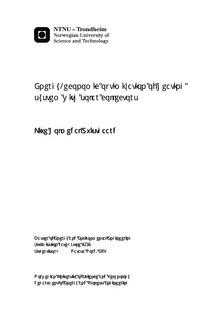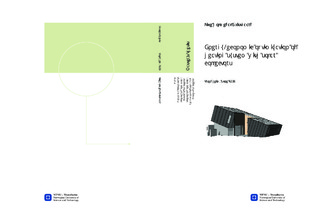| dc.description.abstract | This study examines a suggested system solution consisting of flat plate solar thermal collectors in combination with a ground-source heat pump for building heating and cooling, and production of domestic hot water. The solar collectors are intended to constitute a part of the roof construction. The system design is suggested as an energy solution for a 202 m2 single-family demo dwelling of Zero Emission Building standard. The demo project is a collaboration between Brødrene Dahl and the Research Centre on Zero Emission Buildings. The dwelling will be constructed in Larvik in South Norway.A parametric study of the main design and operation parameters were conducted in order to find the optimum values which would result in the lowest total electricity use in the system. The design and operating parameters which were optimized included collector area, orientation and tilt angle, fluid type for both collectors and ground-source heat exchanger, collector mass flow rate, storage tank design, heat exchanger effectiveness, collector heat loss, design of ground-source heat exchanger, control settings, supply air and zone set point temperature, supply air volume flow rate, night setback control and heat distribution temperature. The optimum values were determined by using the dynamic simulation software tool IDA Indoor Climate and Energy 4.6. Scenarios with different configurations of optimized design and/or operating parameters were developed in order to investigate the effect of optimizing few, several or all of the components in the system, thus finding the composition which resulted in the lowest electricity use. As the marginal cost of expanding the solar collector area is relatively small compared to the system cost, the share of utilized renewable energy for space heating and domestic hot water was investigated for the optimized scenario with both 8 m2 and 16 m2 of installed solar collector area. The results showed that by optimizing the design of the storage tanks, a 5 % reduction in electricity use was achieved. Optimizing the tilt angle, orientation and heat loss coefficients of the solar collectors resulted in a 4 % reduction in electricity use. The results revealed that changing the operating parameters had the greatest effect on the electricity use relative to parameter changes. A total reduction of 7 % was obtained by optimizing the main system operating parameters. With all main design and operating parameters optimized, a total reduction of 18 % in electricity use was obtained with 16 m2 of solar collector area installed. A total reduction of 14 % in electricity use was obtained with 8 m2 of solar collectors installed. Without optimizing the solar collectors, a total reduction of 14 % was obtained with a collector area of 16 m2. The highest amount of renewable energy covering the total heating load was obtained with 16 m2 of solar collector area installed and all main design and operating parameters optimized. It was found that 85 % of the total heating demand was covered by renewable energy. The results showed that by utilizing solar energy the optimized system could provide 85-92 % and 12-70 % of the domestic hot water demand in summer and winter respectively, and 2.5-100 % of the space heating demand. It can be concluded that by installing a larger solar collector area in combination with a ground-source heat pump, a higher share of utilized renewable energy as well as a higher reduction in delivered energy is obtained. By tilting and orientating the solar collectors towards optimum directions, half the solar collector area is needed in order to obtain the same result as if the solar collector tilt angle and orientation are not optimized. | nb_NO |

